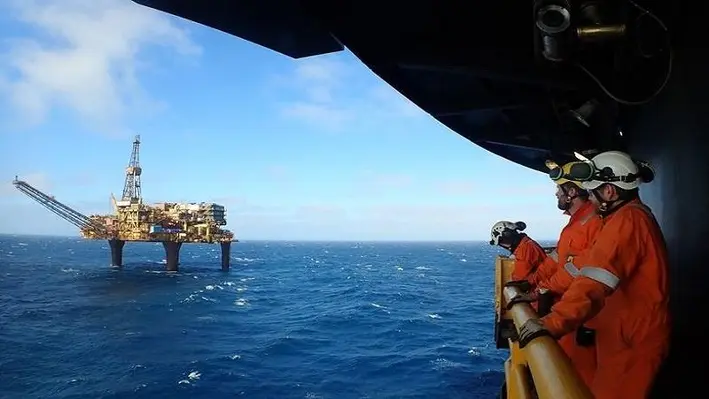

AF Gruppen, a leading contracting and industrial group, has been awarded a contract from TotalEnergies EP Nederland B.V. for the removal and recycling platforms in the Dutch sector of the North Sea.
The contract includes engineering, preparatory works, removal, transportation, recycling and disposal (EPRD) of 10 platforms with a combined weight of 17,000 tons.
AF Gruppen has developed the technology to be able to treat and recycle up to 80% of materials that otherwise would have been sent to a disposal site, pioneering itself as an industry leader in environmental solutions.
The project will start immediately after contract signing and is planned to be completed by the end of 2025. The platforms will be transported to the AF Environment Base Vats for recycling.
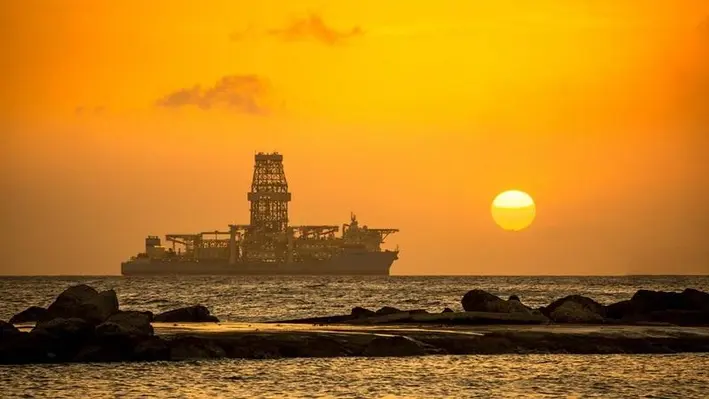

Maersk Drilling has secured a contract extension with Sarawak Shell Berhad and Sabah Shell Petroleum Co Ltd (SSB/SSPC) for the seventh generation drillship Maersk Viking.
SSB/SSPC have executed the remaining three one-well options of the current drillship contract and awarded an additional eight-well contract to Maersk Drilling.
A five-well work scope will be novated to PTTEP for drilling and plugging and abandonment activities at the Kikeh field offshore Sabah, Malaysia, with a total estimated duration of 116 days and an expected commencement of the first well in November 2022.
Following completion of its work scope with PTTEP, Maersk Viking will undergo a scheduled periodic survey, after which the rig will commence a six-well drilling campaign with SSB/SSPC. This work scope is expected to commence in Q4 2023, with an estimated duration of 281 days.
The total firm contract value of the extension and additional contract is approximately US$153mn, including demobilisation and mobilisation fees, as well as fees for the use of managed pressure drilling on certain wells.
“PTTEP welcomes Maersk Drilling into our exciting 2022-23 deep-water drilling campaign, and we look forward to forging a strong partnership in Malaysia,” said Nitipong Kongpat, Head of Malaysia Wells Operations for PTTEP.
“We are thrilled to announce that Maersk Viking will continue to support Malaysian oil and gas developments for the next two years. This agreement is a testament to our great collaboration with Shell, and by coordinating the rig’s schedule across several different deep-water operators, we are driving efficiency and leveraging synergies for everyone involved,” said COO Morten Kelstrup of Maersk Drilling.
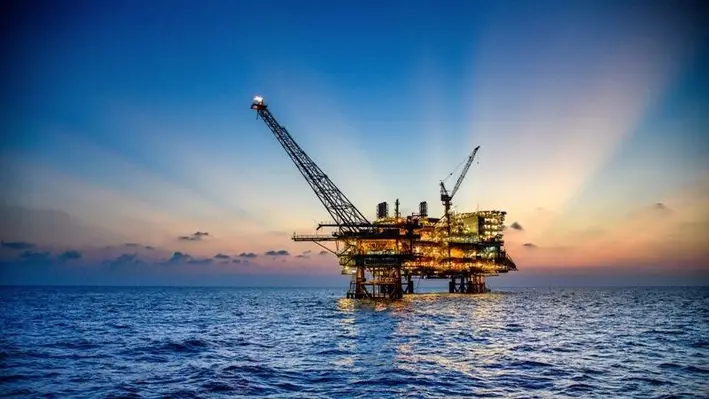

The third well intervention in the Baúna campaign, comprising the installation of a new electric submersible pump in well SPS-92, has been completed and the well brought back on line.
Commissioning of the newly installed pump is progressing well, with the pump expected to be operating at target levels within the next two weeks. Current oil production from the well is approximately 9,500 bopd, compared with 5,500 bopd prior to the intervention. Production from the first two interventions continues to be optimised and together with SPS-92, this has taken total oil production from the Baúna field to approximately 22,000 bopd, towards the upper end of preintervention campaign expectations.
In light of the already strong results achieved from the intervention campaign, and as the BAN-1 expected production uplift of a few hundred bopd is relatively small, Karoon has decided to defer the BAN-1 intervention, to optimise both the overall programme and rig utilisation. Consequently, the Maersk Developer rig will now move to the Patola field, where the first of two new development wells is expected to commence drilling in the next few days.
Julian Fowles, CEO and Managing Director of Karoon, commented, “We are very pleased to have completed the three major interventions on Baúna with no significant safety or environmental incidents. Production has increased from approximately 12,600 bopd immediately before the intervention programme to approximately 22,000 bopd now, with potential further upside as the SPS-92 new pump commissioning is completed, taking production towards the upper end of our targeted uplift range of 5,000 – 10,000 bopd. This is an excellent result, and I would like to thank our Karoon Brazil team, who have significant expertise and a strong track record operating in offshore environments, and our contractor partners, for all their hard work in delivering this programme safely and efficiently. We look forward to commencing drilling on the Patola field, our first development project since taking over as operator of the Baúna concession, once the rig has been mobilised to site.”
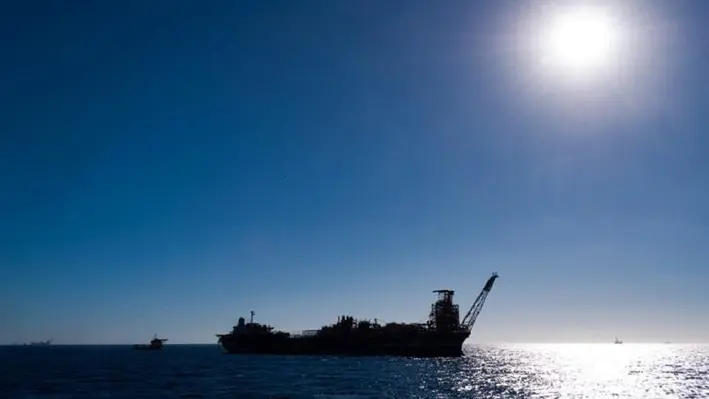

Engineering company Monadelphous Group Limited has secured a contract to provide operations, maintenance and industrial services to support Petrofac in the decommissioning of the Northern Endeavour Floating Production, Storage and Offtake (FPSO) facility.
The Northern Endeavour is a 274 m long FPSO, permanently moored between the Laminaria and Corallina oilfields, approximately 550 km northwest of Darwin in the Timor Sea. Production began in 1999 and peaked at 170,000 barrels of oil per day.
In 2019, the facility was shut down by NOPSEMA after an immediate threat to health and safety was found at the facility. After owners Northern Oil & Gas Australia went into liquidation, it fell to the Government to maintain and ultimately decommission it.
Petrofac was contracted earlier this year as outsourced operator responsible for decommissioning and disconnection of the FPSO. The scope includes the provision of its unique integrated services, working with both local and global suppliers.
The support to Petrofac represents Monadelphous’ first offshore decommissioning contract with work expected to be completed in the second half of 2023.
It represents a host of new contracts and contract extensions awarded to Monadelphous totalling approximately US$160mn.
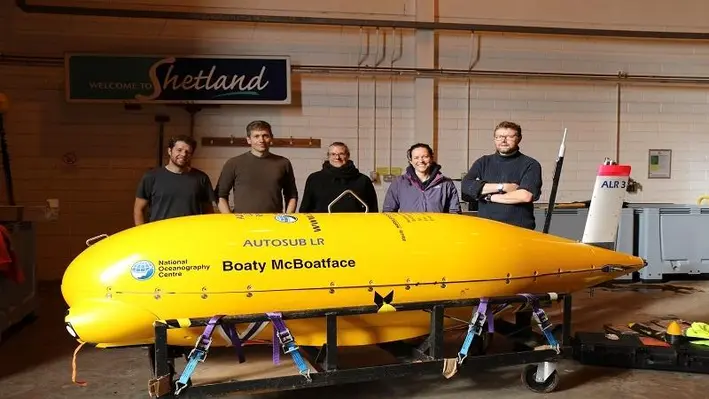

Boaty McBoatface, a robot submarine lovingly named through an Internet poll gone awry, is being utilised by the National Oceanography Centre (NOC) to conduct research on end-of-life oil fields off the coast of the Shetland Islands, North Sea.
The robot will be exploring several oil and gas structures in a bid to revolutionise the way marine surveys are conducted and ultimately protect the marine environment while helping the industry transition towards net-zero.
The Autonomous Techniques for infraStructure Ecological Assessment (AT-SEA) project, led by the NOC will trial the concept of using submarines like Boaty for high-tech, low-impact monitoring to pick up any potential environmental impacts at these industrial sites. This may eventually replace the current approach for environmental monitoring for decommissioning that requires dedicated ships and teams of people offshore.
The robots used will gather data on the water, pollutants and currents, as well as taking images of the sea floor. The team will test whether these robotic systems can gather equivalent information to the surveys currently done using ships. In doing so, emissions, risks and the cost of these operations will be significantly reduced in the future, thanks to the automated technology being developed at the NOC.
Project Lead for AT-SEA, Daniel Jones from the National Oceanography Centre, explained, “The overall goal of the project is to improve the environmental protection of the North Sea at a reduced cost and impact to the environment. We aim to demonstrate how this leading robotic technology from the NOC could be used worldwide to support this crucial ocean monitoring.”
There are currently thousands of oil and gas structures in the sea that are approaching the end of their lives – in UK waters alone there are nearly 500. As part of decommissioning, they typically need to be removed and the environment returned to a safe state. To ensure that no harmful effects will occur to the marine environment, decommissioning operations need to be supported by an environmental assessment and subsequent monitoring.
Dr Jones continued, “This technology has the potential to change the way marine surveys are carried out in the future. Autonomous submarines could offer many advantages over current approaches; improving the quality and quantity of environmental information while cutting the cost and environmental impact for a survey ship and its crew. The AT-SEA project will test this concept in UK waters and carry out the first fully autonomous environmental assessment of multiple decommissioning sites.”
As well as the decommissioned sites, the robot will visit a special marine protected area that is known to have natural leaks of gas, to check the robot can reliably detect a leak should one occur in the future.
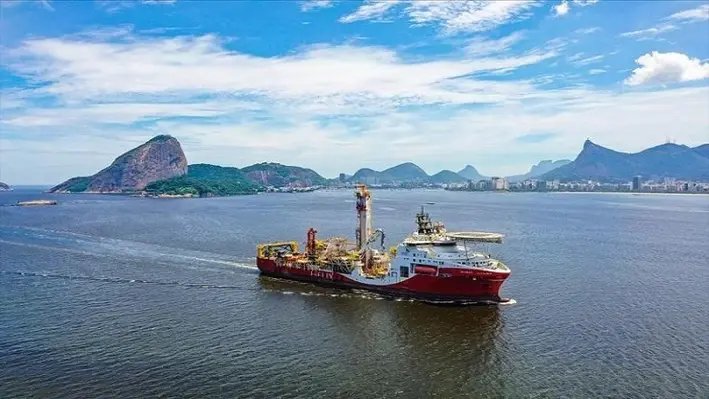

Helix Energy Solutions Group, Inc. has entered into a two-year extension of its well intervention charter and services contracts with Petróleo Brasileiro S.A. (Petrobras) for the Siem Helix 2 well intervention vessel offshore Brazil.
The negotiated extension is scheduled to conclude in December 2024.
Scotty Sparks, Helix’s Executive Vice President and Chief Operating Officer, commented, “We are glad to negotiate this contract extension and look forward to continuing our long and productive working relationship with Petrobras. Market conditions globally and in Brazil have been improving, and demand for our world-class assets and experienced crews has been steadily increasing.”
The Siem Helix 2 is a purpose-built, advanced well intervention vessel capable of performing a wide range of subsea services including production enhancement, well decommissioning, subsea installation, offshore crane and Remotely Operated Vehicle operations, offshore construction and emergency response. The vessel is currently performing riser-based well intervention activities in the Santos and Campos Basins and to date has completed more than 60 well interventions for Petrobras.
Sparks added, “The Siem Helix 2 has consistently provided industry – and global-leading well intervention services to Petrobras. This two-year extension demonstrates the capacity for Helix to continually provide innovative solutions to fit client needs, backed by our experience and proven track record, and supports our Energy Transition business model of offering clients the ability to maximize production from their existing wells.”
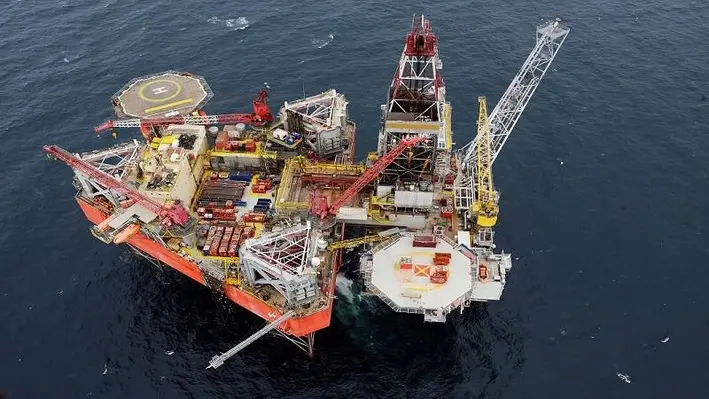
 Neptune Energy has announced the award of a US$30mn decommissioning contract to Well-Safe Solutions, for a campaign covering more than 20 wells located across eight Dutch and UK North Sea fields.
Neptune Energy has announced the award of a US$30mn decommissioning contract to Well-Safe Solutions, for a campaign covering more than 20 wells located across eight Dutch and UK North Sea fields.
It is the first multi-region, multi-well decommissioning campaign award by Neptune to a single rig contractor.
Well-Safe Solutions’ Well-Safe Protector jack-up rig will carry out the plug and abandonment of a minimum of four subsea and 17 platform wells located in Dutch and UK waters.
Neptune Energy’s Managing Director in the Netherlands, Lex de Groot, said, “Safely decommissioning assets at the end of their economic producing lives is an important part of our work. We plug and abandon wells, taking everything with us and leaving the seabed in a clean state. That is our responsibility and we don’t take it lightly.”
“Working with a single rig contractor for this extensive, cross-border decommissioning campaign is an innovative way to reduce time and cost.”
Duncan Morison, Rig Manager of the Well-Safe Protector, commented, “The Well-Safe Protector boasts a large volume of deck space for tubing, casing and conductor recovery, allowing effective batch operations and will help Neptune Energy realise considerable operational savings.”
The Well-Safe Protector is scheduled to mobilise in Q1 2023 to the Dutch and UK sectors for P&A operations in the fields.
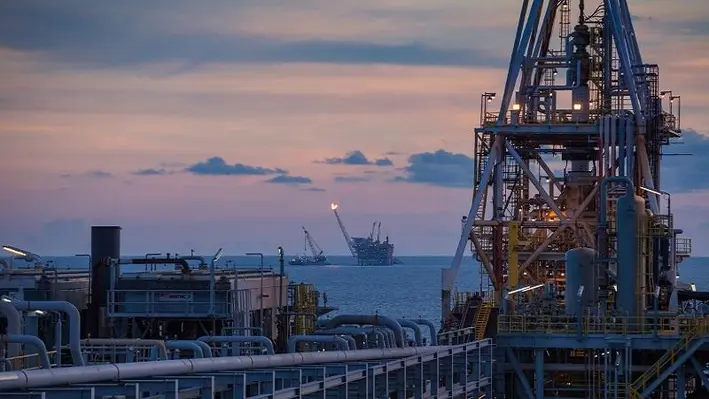

The Department of the Interior today has proposed a new rule to ensure offshore oil and gas operations on the Outer Continental Shelf are conducted with the utmost safety and oversight standards.
The proposition by the Bureau of Safety and Environmental Enforcement (BSEE) will revise the 2019 Well Control Rule and focus on well integrity and blowout prevention. These innovations will help protect human lives and the environment by incorporating the latest technology and the lessons learned from operator experience and incident data since the current rule was adopted.
“Protecting human lives and the environment has always been BSEE’s highest priority, and this proposed rulemaking will further ensure safe and environmentally responsible offshore energy production,” said BSEE Director Kevin M. Sligh. “These proposed revisions to the Well Control Rule are the result of knowledge and experience gained by stakeholders and BSEE since the 2019 rule was implemented. They will protect workers’ lives and the environment from the potentially devastating effects of blowouts and offshore oil spills.”
In the immediate aftermath of the Deepwater Horizon incident in 2010, BSEE adopted several recommendations from multiple investigation teams to improve the safety of offshore energy operations, leading to the publication of the 2016 Well Control Rule. In May 2019, BSEE published a final rule that weakened certain safety provisions. Today’s proposed rule would revise some of the items that were amended or rescinded in 2019.
To further protect human lives and the environment, the Department is proposing revisions that would:
• Require blowout preventer systems (BOPs) to be able to close and seal the wellbore to the well’s kick tolerance design at all times;
• Remove the option for operators to submit failure data to designated third parties and instead require the direct submittal of failure data to BSEE;
• Require failure analysis and investigations to start within 90 days instead of 120 days;
• Require independent third parties to be accredited by a qualified standards development organisation;
• Specify that surface BOPs on existing floating facilities must follow the dual shear ram requirements when replacing an entire BOP stack;
• Require that remotely operated vehicles be capable of opening and closing each shear ram on a BOP;
• Require the operator to provide test results to BSEE within 72 hours after completion of the tests if BSEE is unable to witness testing.
Publication of the proposed rule also initiates a 60-day public comment period.
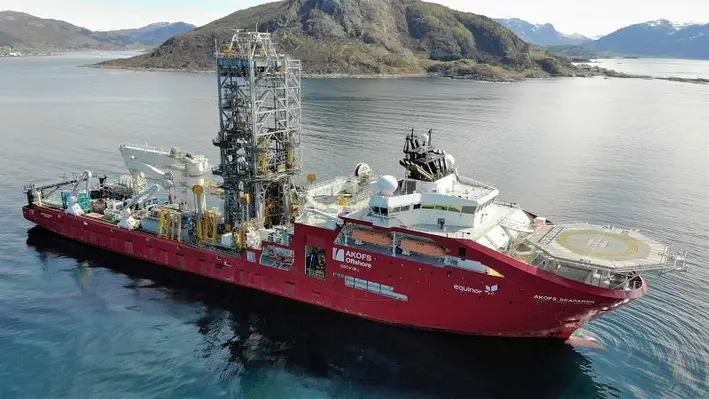
 The Petroleum Safety Authority Norway (PSA) has given its consent for Aker BP to use the mobile drilling facility AKOFS Seafarer for well intervention activities on the Skarv field.
The Petroleum Safety Authority Norway (PSA) has given its consent for Aker BP to use the mobile drilling facility AKOFS Seafarer for well intervention activities on the Skarv field.
The AKOFS Seafarer is owned by AKFOS Offshore which undertakes well intervention and subsea installations in Norway as well as internationally.
Located in the Norwegian Sea, the Skarv field has been developed with a floating production, storage and offloading vessel (FPSO) with five subsea templates with 15 wells. Work is ongoing to evaluate the potential of infill wells and other prospects in the area due to a decline in production.
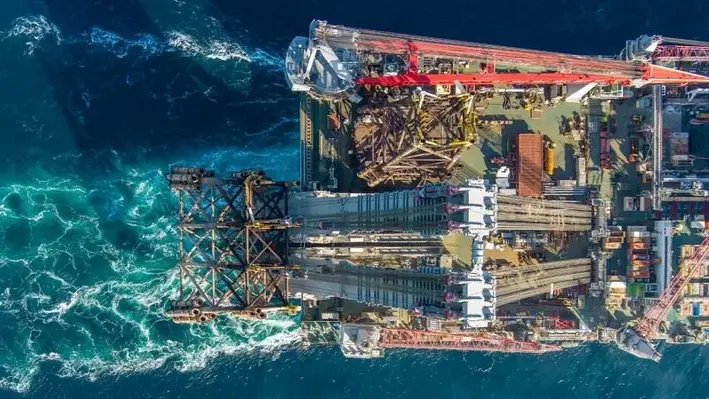
 Pioneering Spirit, the world’s largest construction vessel, has removed the West Alpha and East Alpha structures from the North Sea’s Tyra field and will deliver them for recycling at Frederikshavn, Denmark.
Pioneering Spirit, the world’s largest construction vessel, has removed the West Alpha and East Alpha structures from the North Sea’s Tyra field and will deliver them for recycling at Frederikshavn, Denmark.
The removal of the jackets concludes Allseas involvement in the Tyra Redevelopment Project. In total, Pioneering Spirit has removed more than 35,000 tonnes of offshore facilities from the field. The redeveloped Tyra II will continue the production of natural gas with 30% less CO2 emissions contributing to the energy security for Denmark and Europe.
2022 saw a record year for Pioneering Spirit. The vessel has lifted and transported approximately 115,000 tonnes of new and decommissioned facilities for the offshore energy industry.
Allseas’ role in the project covered engineering, preparation, removal and transportation to specialist dismantling yards of the complete East Alpha and West Alpha platforms, flare jackets, IPF and monopole.
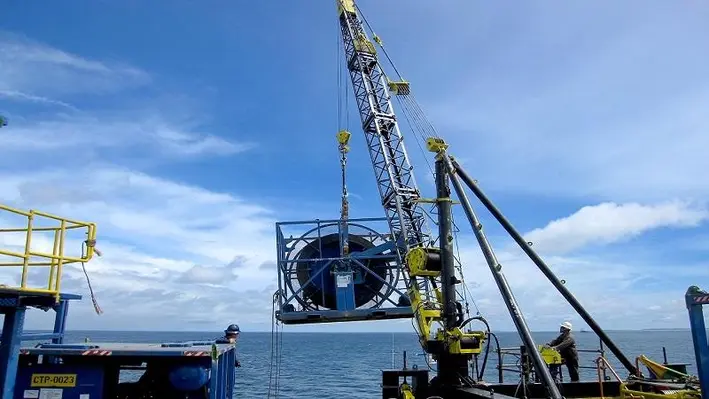

Thunder Cranes, a leading provider of portable, modular, offshore rental cranes with a dynamic lift capacity ranging from 2 to 60 tons, has re-opened its operations in the Middle East with a base in the United Arab Emirates.
The company’s temporary installation cranes are designed to be versatile and adaptable, with a number of tie-down scenarios, on-deck placement configurations, and boom-length options to choose from.
The cranes allow clients to efficiently and cost-effectively support P&A, well intervention, facility engineering and decommissioning jobs, without compromising safety, time, and performance.
Previously Thunder Cranes had operated in the region with a base in Dubai from 2009 to 2019. The newly re-opened office and yard facility will enable Thunder Cranes to more effectively serve the UAE and Middle East moving forwards.
Dinesh Arumugam, CEO of Thunder Cranes, said, “As a market-leading provider of portable-modular offshore rental cranes, Thunder Cranes is committed to helping customers in the UAE and across the region with cost-effective and efficient lifting solutions to support offshore projects.”
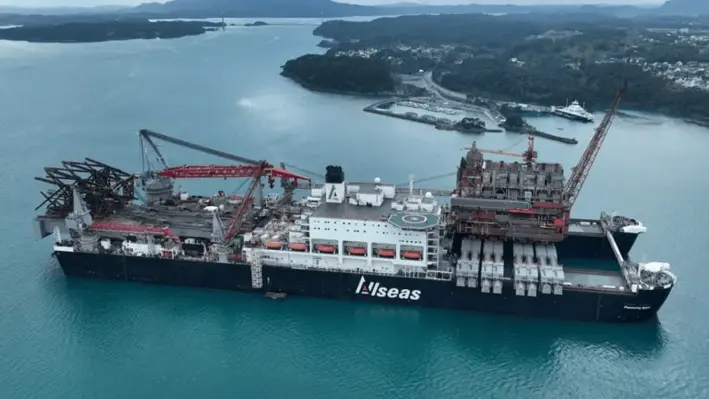

Allseas has been awarded a major decommissioning contract by TAQA UK for the removal and disposal of multiple northern North Sea facilities.
The engineering, preparation, removal, and disposal (EPRD) contract comprises TAQA’s Eider Alpha, Tern Alpha, North Cormorant and Cormorant Alpha platforms. The combined weight of the topsides and jackets to be removed is around 114,000 tonnes, making this the largest single offshore UK Continental Shelf (UKCS) decommissioning contract scope to date.
Allseas’ task is to remove four platform topsides, three steel supporting jackets and transport them to a suitable onshore yard facility for dismantling. It is hoped that at least 95% of the materials from the facilities will be reused or recycled.
The platforms are located close to each other, approximately 100 kilometres north-east of Shetland, in water depths ranging from 150 to 167 metres.
All structures will be lifted and removed to shore as single units using Allseas’ heavy lift vessel Pioneering Spirit.
Platform removals are planned post 2025.
Page 72 of 111